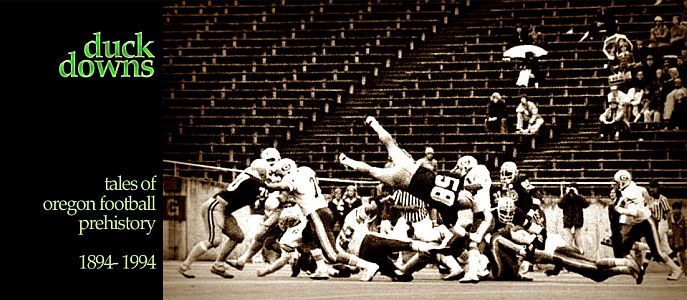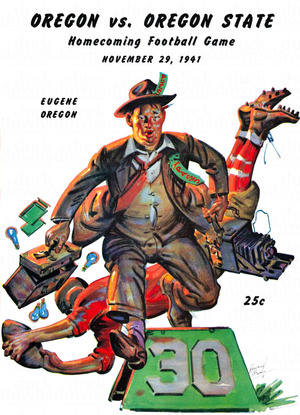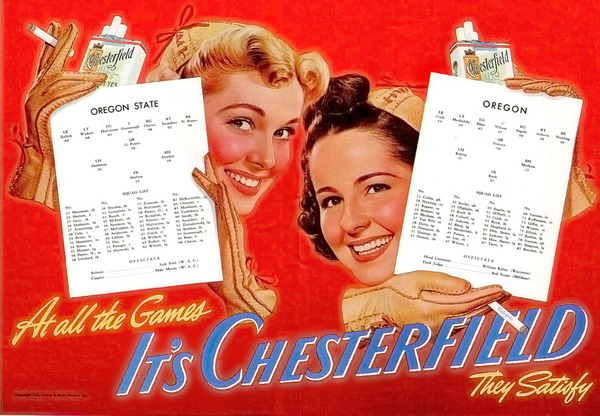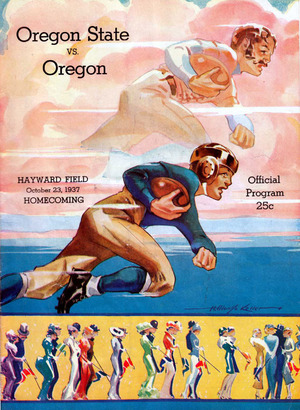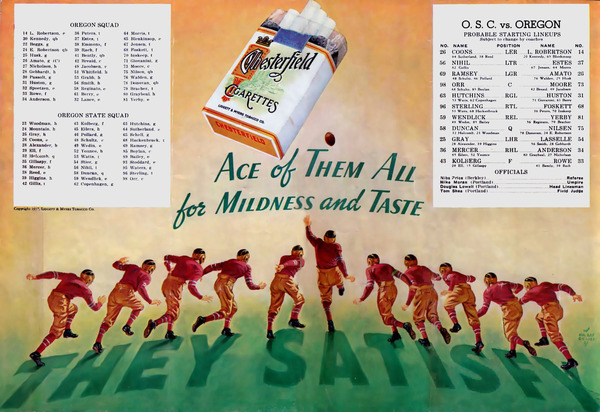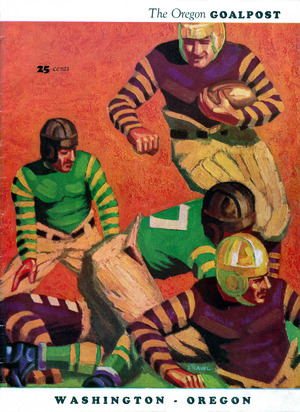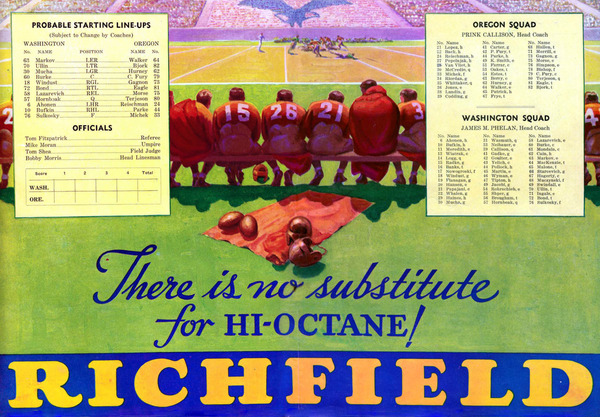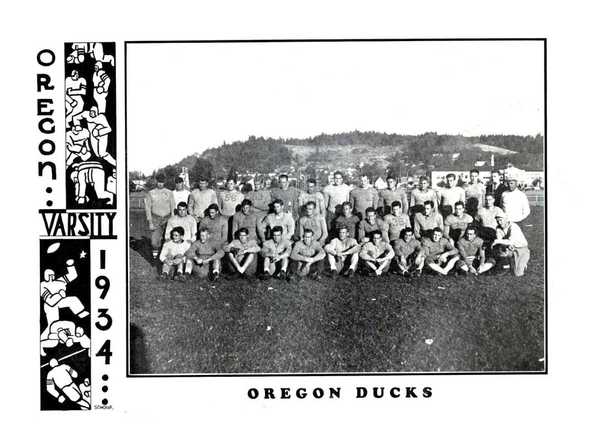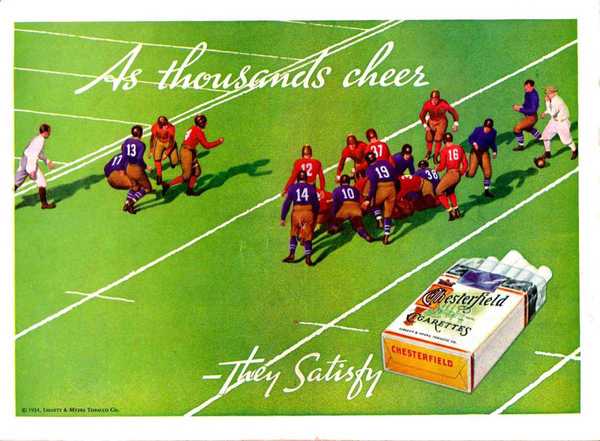November 29, 1941: OSC at Oregon (Civil War)
 September 3, 2011
September 3, 2011 The nation would be at war within ten days, but the only reflection of a war footing in the ’41 Civil War program is a mention of Mike Mikulak, backfield coach, who was called up to active duty and replaced by Manny Vezie. Otherwise, this is a big program at 32 pages that supports the importance of the game: An OSC win would put them into the Rose Bowl for the first time in program history. (Win they did, 12-7 over an injury-riddled Duck squad; but the December attack on Pearl Harbor forced the relocation of the game from Pasadena to Durham, North Carolina.)
ASUO business manager Jack Saltzman’s team really stepped up its game in 1941. The year’s program is loaded with a variety of ads; besides the obligatory full-color cigarette pages, there are dozens of half- and quarter-page ads for local business, national entities like Pepsi and Longines, and even pages without display advertising contain single-line text ads in the footer.
The cover art is by Howard Brodie, who would go on to widespread acclaim as a battlefield artist and later as a courtroom illustrator at high-profile trials such as the Chicago Seven and My Lai court martial.
A humorous “Glossary of Football Terms” is not all that out of date when looked at 70 years later. (“Quarterback – Nitwit who couldn’t hear the instructions you shouted to him during the game.”)
Center roster spread:
